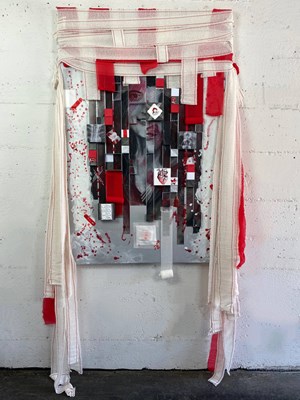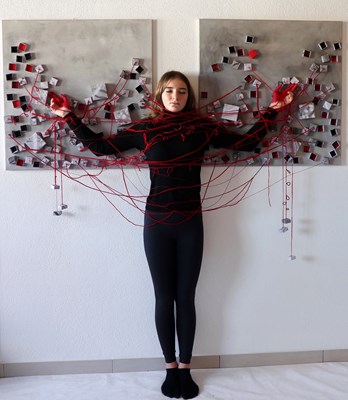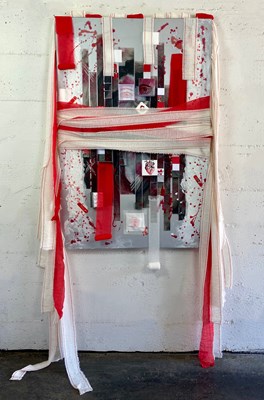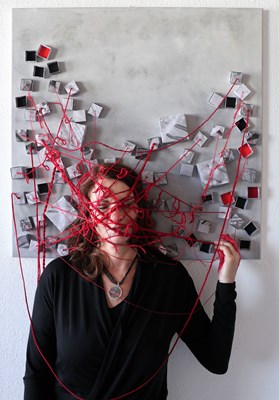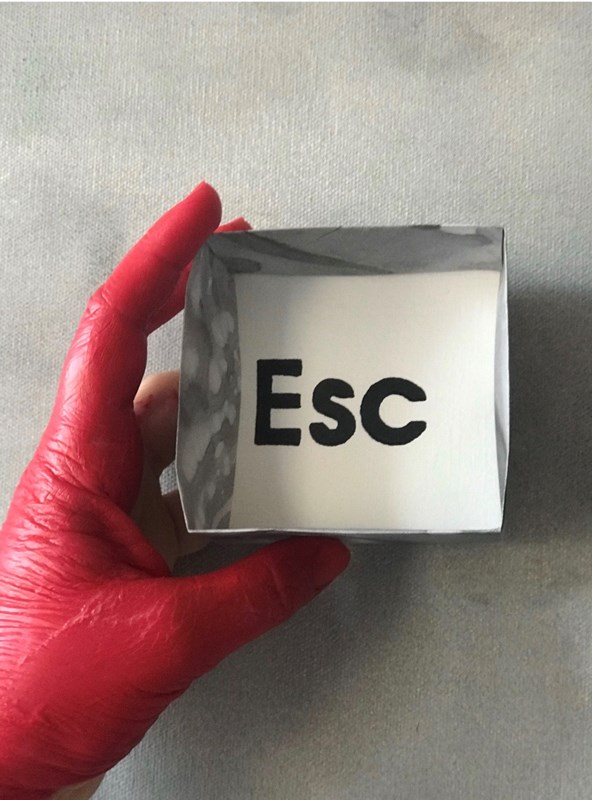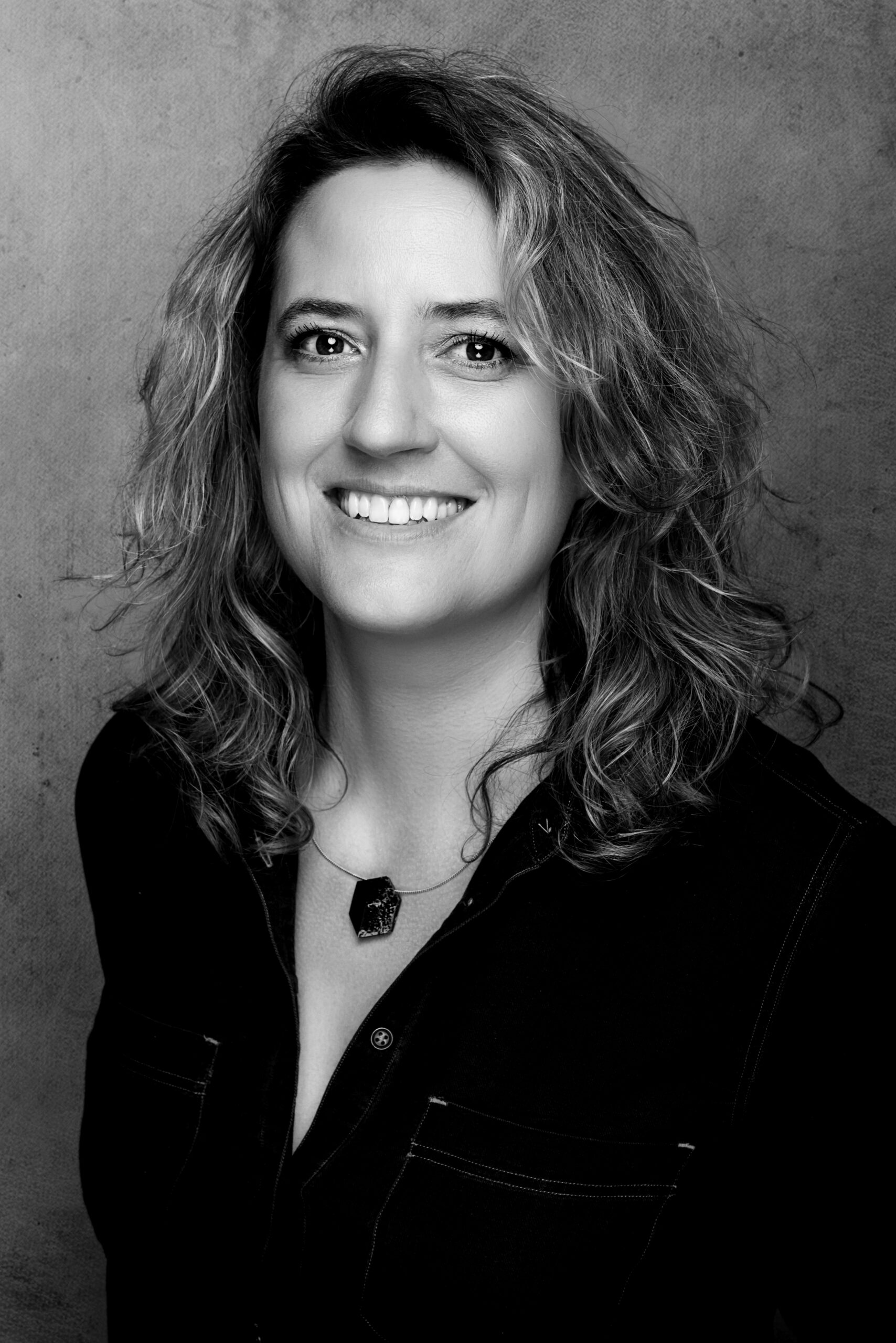
This interview about Sève Favre’s recent collection was conducted via email by Art Editor Anna Campbell.
Sève Favre is a visual artist originally from the French part of Switzerland. Sève was introduced to arts from a young age but decided to follow an academic study first: Art History at University. She supplemented her literature degree with secondary school teaching. She continued her education by taking several seminars and workshops in the visual arts, notably at the Ceruleum School of Art in Lausanne. In 2005, she created her first modular artwork and during several years she maintained both careers simultaneously, teaching and private commission for artworks. Today she completely devotes herself to her art practice and promotion. She has been exhibited in Switzerland and abroad. This year, Sève was nominated by Arte Laguna Prize in the installation and sculpture section. Passionate about the concept of integration, she concentrates on transcending the classical boundary between the artwork and the viewer. The main feature of her art is interactivity. The keywords that support her concept are interaction (be together), variation (be different), and activity (be active). Her name for this experience is intervariactivity. Sève can be found on Instagram, Facebook, and Twitter @sevefavre. She can be reached via email at info@sevefavre.com.
Superstition Review: You frequently talk about your “intervariactive” art as a synthesis of being together, being different, and being active. What attracted you to the idea initially, and how do you continue to explore it through your work?
Sève Favre:
Yes, being together is interaction, being different is variation, being active is activity. At the beginning, I really wanted to break this classic boundary between the artwork and the spectator, especially through the work on canvas. I found it interesting to integrate the spectator in the process of creating the work, which is a continuous process that starts in my studio but then continues elsewhere thanks to the possible appropriation by the public, a process of co-creation, by revealing the different possibilities of the work. Then, I extended this principle to the interactive double digital of certain works, as you can test it here.
These different possibilities, both real and virtual, multiply the possibilities of participation and interaction. For example, from the digital realisations I can create a gif containing the different proposals made by the participants: a collective work, like this one :
All this can then be shared on social media….
SR: The human component of your work is quite striking. Can you explain your process for creating these pieces?
SF: Indeed in my artwork, the human can be the subject of a work, but is above all the vector of metamorphosis of the artwork (real or digital). In our world where the development of artificial intelligence is dazzling, I find it interesting to highlight our fragility with/on human characteristics, Moreover, by allowing the spectators to intervene directly on my works, I would like to point out specifically human attitudes, such as trust, risk-taking, respect… etc… The spectators are not mistaken because the first question that comes up most often is if I am not afraid of the consequences of their action on my paintings. I don’t believe that this emotion is one day likely to be a characteristic of robots. This is really what I find interesting and important to make the viewer feel: his humanity.
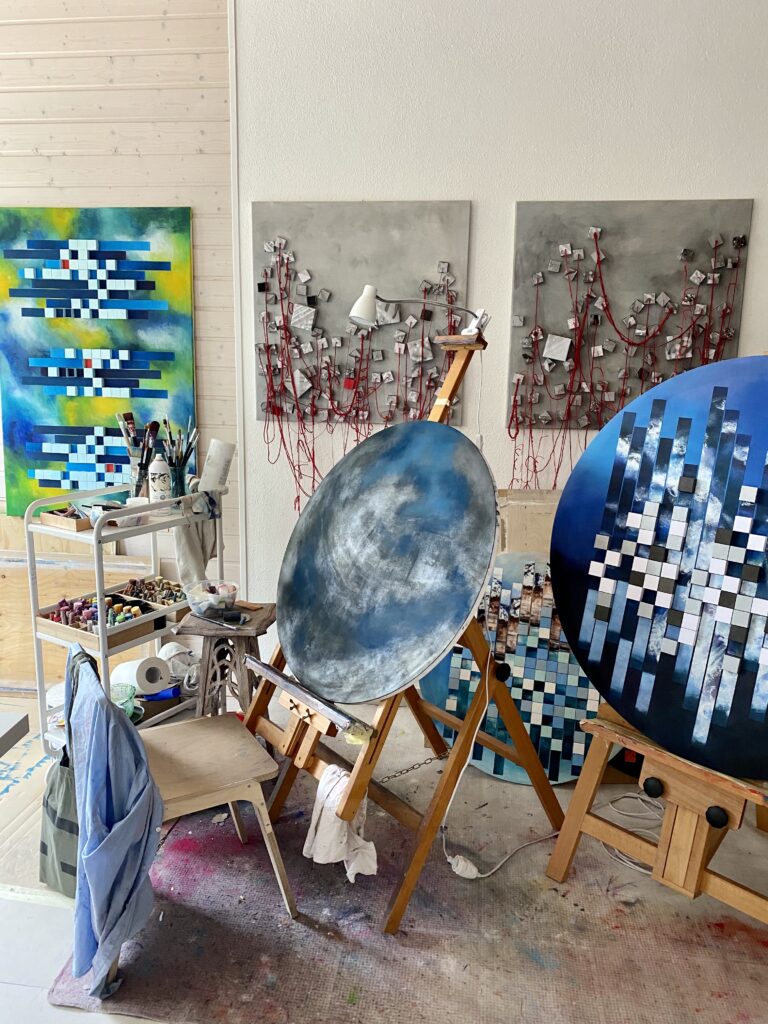
SR: What does your physical workspace or studio look like?
SF: My artworks require different stages; my studio is organized according to them. First of all, I have a relatively large storage space for materials because I mainly work with mixed techniques so I use different types of materials. Secondly, there is an easel workspace which is very practical especially when I work with pastel chalks; I can tilt my easel to manage the dust from the chalks. On a workbench, I can concentrate on measuring, cutting and origami work. And finally, as far as assembly is concerned (gluing the different parts made), I have to do it on the floor so that the canvas is horizontal and stable. And I like to have a cup of tea near me when I work while listening to the radio or music during my time in the studio.
SR: What is one thing you must have with you as you work?
SF: My necessary tool for absolutely every artwork is my favourite pair of scissors.
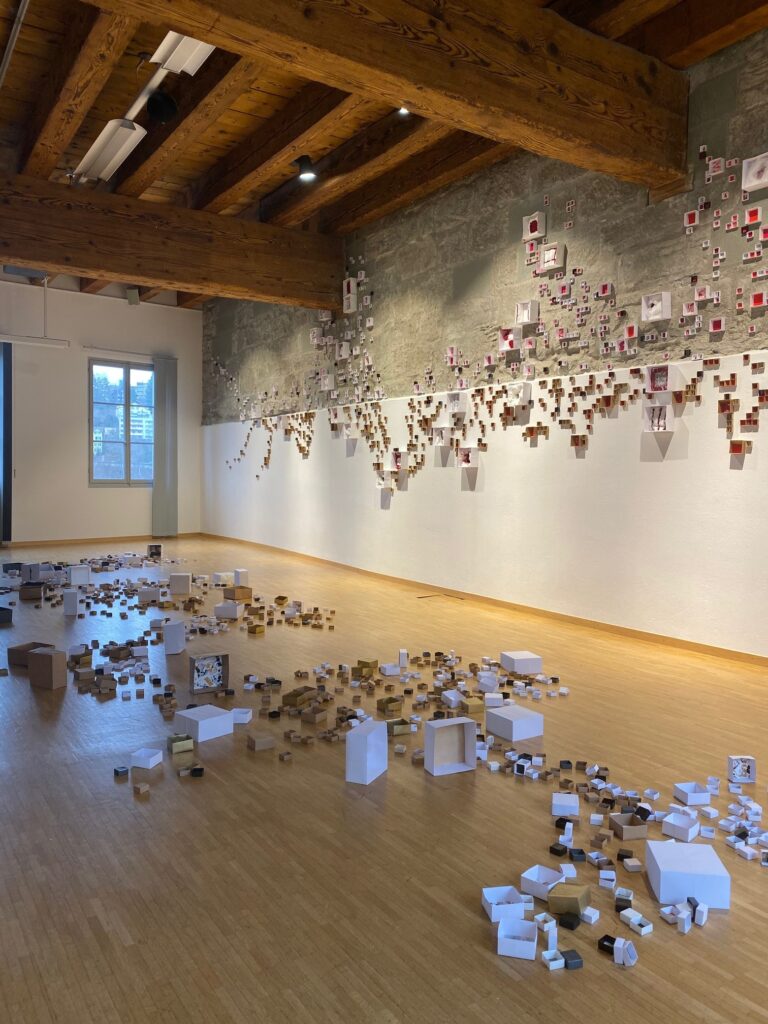
SR: How has the global pandemic affected your process?
SF: The pandemic had more of an impact on my exhibition schedule. However, it has allowed me to develop the digital part of my work more, notably thanks to my participation in CADAF online (Contemporary and Digital Art Fair). I also remotely managed the setting up of an in situ installation for an exhibition, as I couldn’t travel to London to do it myself. That was a challenge I wouldn’t have considered in the past.
SR: How is your work touched by social justice?
SF: Behind my work there are fundamental concepts of value and participation. The notion of value in my work is linked to the different possible variations. Are they of equal quality? Only the owner or the public can determine this: is it preferable to keep the artist’s proposal, as this visual will have more value than theirs? Would they like to invite a celebrity to interact with the work and then, religiously preserve the evidence… or do they feel that the choice of a relative will be much more valuable? All these questions are much more intimate and personal in scope than the purely economic value, but they are all equally necessary because they challenge the relationship with objects in a world that continually produces them in disproportionate quantities.
SR: What are your upcoming projects?
SF: First of all, I am working on my new website. Secondly, I am preparing a new installation normally for a Festival, but we have a lot of uncertainty about how it will be held in relation to the pandemic. Next year, I will exhibit my installation “Être au pied du mur” at the Arsenal in Venice as part of the Arte Laguna Prize finalists’ exhibition. As this year is special, I am trying to focus on my digital presence; I think it’s important to also highlight the digital part of my artworks, especially with a project of cultural participation in Switzerland.
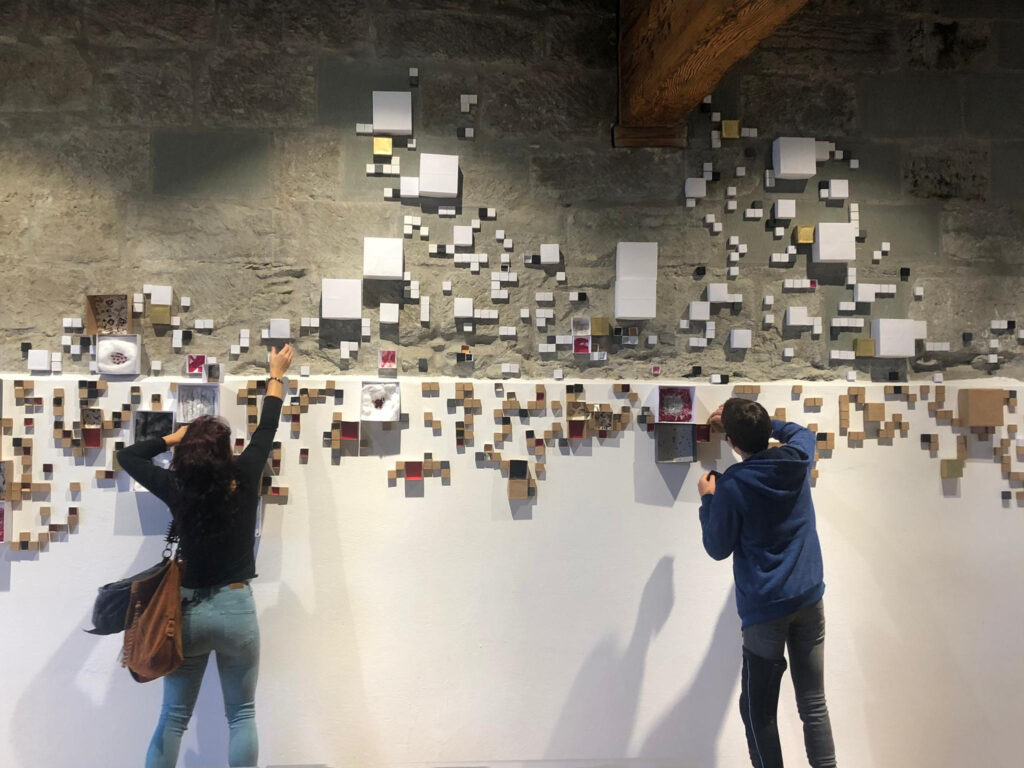
You can find Sève on Instagram here and on Twitter here.
- Art Blog: C. Christine Fair - November 10, 2020
- Art Blog: Brenna Fisher - November 8, 2020
- Art Blog: Ryan Greene - October 31, 2020
